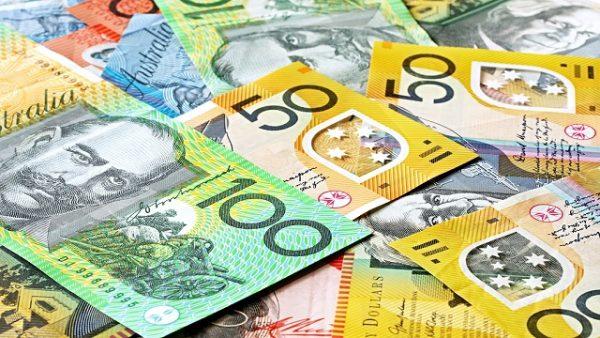AUD/USD Introduction
The Australian dollar or Aussie has a unique position in currency trading. Many large Asian economies rely on state regulation of the currencies, and it makes trading harder. For example, both Japan and China are massive economies. Still, the nation’s government has a lot of control in the Forex market. Australia, however, does not exercise control in the Forex market. The RBA (Reserve Bank of Australia) takes a western approach to the Aussie’s value. The Aussie/US Dollar cross is abbreviated as AUD/USD. It is one of the most liquid currency pairs for the Aussie. A few new currents in the AUD/USD have emerged through the last decade, which can be a passing influence on the pair.

The AUD/USD Economy
Generally, Australia has a much higher rate than most of the western economies. It is even more now, especially since the introduction of the European common currency. Due to these high-interest rates, Aussie has become a plum to carry traders. These people want to gain from the difference between a higher-yielding currency like Aussie and lower-yielding currency like the Japanese Yen or the USD. If you look in the AUD/USD from a practical trading perspective, you will notice that the outlook for interest rates in Australia and the USA are very crucial.
At present, Australia and the USA have the same overnight discount rate of 1.5%. The Federal Reserve and the RBA have set these rates, but this is not the historical norm. If these rates diverge again, then it can affect the value of the AUD/USD severely. For instance, the US Fed has told the market that it intends to raise rates. If it does so, then it can drive capital flows to the USD from the Aussie.
On the contrary, if the US Fed cannot raise rates due to the huge burden of debt and the deficit the USA is facing, the opposite can happen, and the commodity markets may heat up due to the weakness of USD. A lot will unfold, and it can result in macro factors that the RBA cannot control. Moreover, apart from the Australian housing market, the value of the Aussie can be driven by Asian growth and commodity prices.

What moves AUD/USD?
Economic factors you need to keep your eye on during AUD/USD trading include:
Chinese data
Chinese PMI: The Chinese PMI (Chinese Purchasing Manager Index) is an essential factor to pay attention to. The story of Chinese growth rests on industrial production heavily. As Australia remains one of the leading iron ore suppliers, for Mainland China, CPMI may be crucial for AUD/USD. If the index is above 50, it indicates expansion and positive news for Aussie. Still, market expectations are keys to day trading.
Chinese GDP: Chinese GDP is the second-largest economy worldwide, and it is a key metric when you look at global growth. It has special importance regarding the Australian economy’s health because the majority of Australian minerals are exported to China. So, if the Chinese GDP drops unexpectedly, the Aussie may also weaken against the USD.
Chinese Import data: Despite being a manufacturing powerhouse, the Chinese economy lacks some basic materials necessary to function continuously. Import figures enable traders to gauge the macro impact of industrial demand, and AUD/USD traders must keep an eye on metals and coal imports. Australia is a major exporter of coal to China as well.
Commodity prices
The markets sometimes leave fundamentals behind and use the Aussie as a proxy to holding a long position in the commodity markets. Keep in mind that prolonged strength or weakness in the coal market or industrial metals may significantly affect the Australian economy. However, in some cases, a rally or a big sell-off in the commodity complex can affect the AUD/USD. Higher commodity prices are beneficial for the Aussie. Unlike GDP surprises with calendar data and time, the commodity market is volatile and can move the AUD/USD out of nowhere.
Federal Reserve (US FED) / Royal bank of Australia (RBA)
Like most central banks, the US FED and RBA release minutes from their policy meetings. You need to closely watch these minutes because you can find clues about the future interest rate decisions in them.
Australian data
Australian housing data: As the US a decade ago, the Australian housing market right now is not in the best shape. The RBA is aware of the situation very well. So, if there is any significant deterioration in the housing market, you can see the value as negative for the Aussie’s value against most of the other currencies worldwide.
Australian inflation: Like the CPI in the USA, the RBA also guides its policy decisions by watching some inflation figures. The same ideas also apply when higher inflation creates the need for rate increases or when low inflation allows the RBA to pursue a looser monetary policy.
US data
US GDP: If a GDP print misses expectations, then it can lead to big moves. According to central banks, GDP is one of the major indicators of economic health. So, an unexpected acceleration or slowdown can push the largest markets in the world within nanoseconds.
US dollar index: Many traders believe that the US dollar’s value against other major currencies influences commodity prices. A cheaper dollar can make more attractive commodity purchases. However, this idea does not always work over a medium-term time horizon. Regardless, many traders opt to purchase the AUD/USD when the US dollar index is weak and sell it when the USD is strong. This dynamic involves the value of commodities and can be the basic idea to trade the AUD/USD.
There is no right or wrong way of reading the figures. So, traders need to learn to interpret data and understand the market’s expectations before they risk their money in trading. You can easily decide how to trade data events when you understand the current market psychology. Assume that a Chinese PMI will weaken, and the growth of the Chinese economy is slower than market consensus? Short the AUD/USD, which is similar to purchasing the USD and selling the AUD.
US CPI: The US Central Bank (Federal Reserve) gauges its monetary policy by using this measure. A higher inflation rate leads to tighter monetary conditions, which means higher interest rates. Higher US rates can lead to a demand for dollars, especially if there is no expectation from the RBA to raise rates.
The Conclusion
The AUD/USD currency pair is highly leveraged to global growth. It enables traders to enter the Asian market, but they can still deal with the western-based financial system. The currency pair has a low risk of central bank intervention with ample liquidity. Moreover, according to its fundamental factors, it is an excellent pair for trading. By trading this currency pair, traders can find it easy to take a global growth position, which is challenging to do by trading other major currency pairs.




